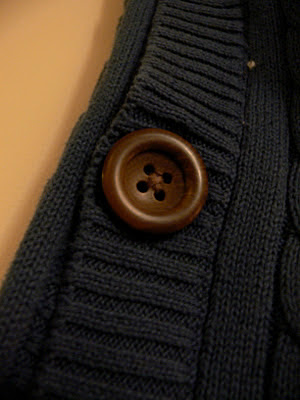
Here is another great idea from
Birthing from Within by Pam England --- but one that is applicable at any life transition!
A little while ago, Cam and I sat down together on a Sunday afternoon and each wrote a "worry list." Our lists contained our private worries about the birth of our baby, and life together afterwards (life after birth?). After we had written them down, we went through and talked about each worry, one by one, learning about each other's concerns and discussing how we would like to respond in the event that they are realized.
This project could seem counter-intuitive to some, who might feel like talking about a "worry" will make it real. I believe it is true that expressing hope helps us realize our hopes --- so it seems logical that the opposite is true. And it may have been true for us, if we had simply expressed our worries and ended at that. We may still have been caught off guard by them.
Caught off guard! (Photo by Thomas, 2010 :)
But by discussing them and deciding upon possible courses of action, we now feel more prepared to face and embrace whatever comes our way! And in the case of difficult circumstances, we will be more sensitive to each other's feelings and needs, having made each other aware of many of them ahead of time.
As an example, Cam's worry list included a concern about being able to get enough sleep once we have a newborn. My list mirrored his, as I know he is a very light sleeper and has a hard time falling asleep: I was worried that he might not be able to function well on only a few hours every night. We talked about it. I was able to remind him that the sleepless phase won't last forever, and that our love for the baby will help mitigate the frustration of sleep loss. We talked about co-sleeping, and about how having the baby at arm's reach will allow us (we hope!) a few more hours of sleep every week, if not every night as some have testified. We talked about taking turns. We agreed we will need to be understanding of each other, and patient if sleep loss puts one or the other of us in a touchy mood.
Clearly, our having talked about sleep concerns hasn't made them less likely to happen. But we are prepared with a course of action, and with compassion!
Before we got married, we had many similar conversations in which we discussed the potential difficulties of newlywed life --- even the most sensitive ones. I believe such conversations are primarily responsible for what a wonderful first year we had --- not because we did not encounter problems, but because we had prepared ourselves and were determined to deal with them positively.
Determined to deal with our worries positively! (Photo by Thomas, 2010 :)
I recommend a "worry list" at every transition of life, with your partner or alone. (You can call it something else if you want to make it less threatening --- maybe a "list of contingencies"?) You don't make your worries less real by bottling them up; you make them more volatile as you deny yourself the opportunity to prepare.
And "if ye are prepared, ye shall not fear"
(D&C 38:30).

























